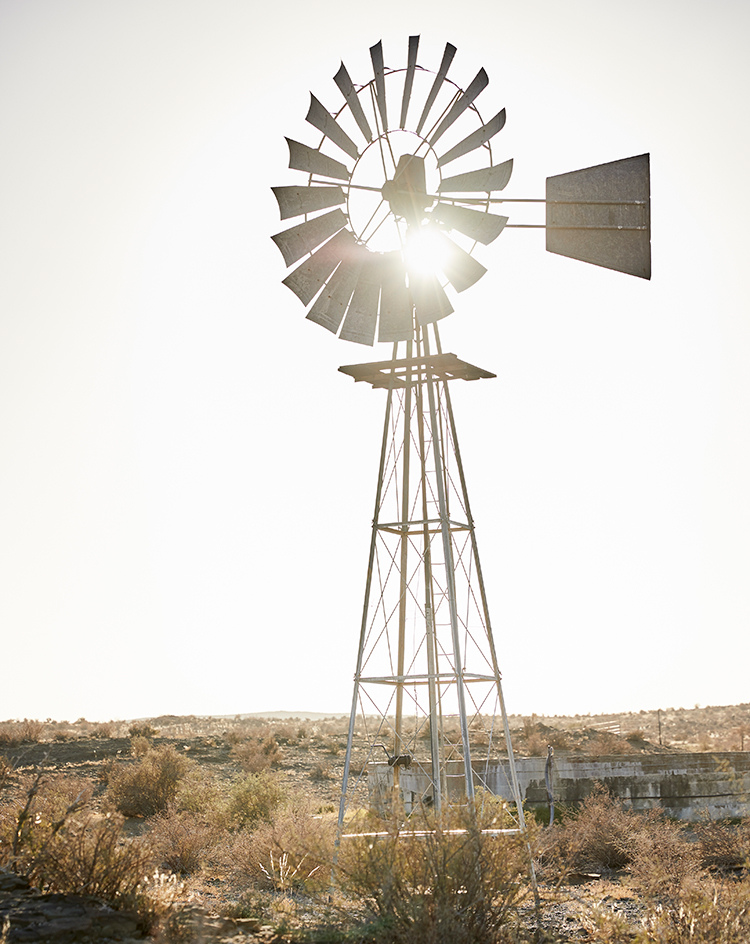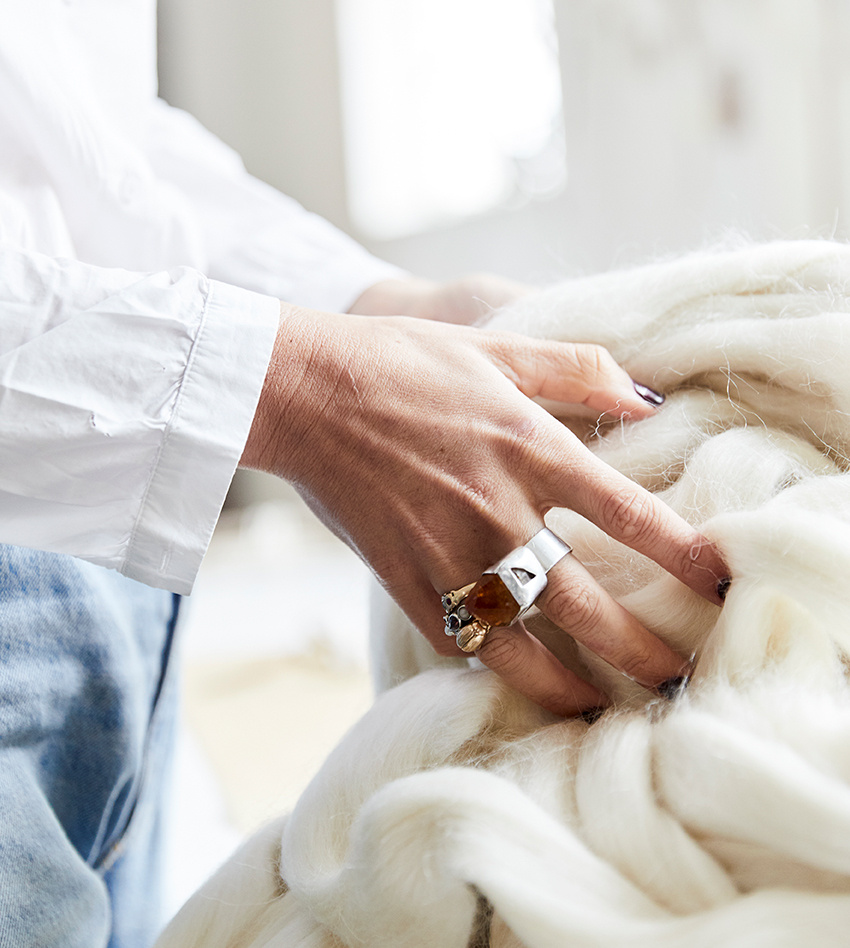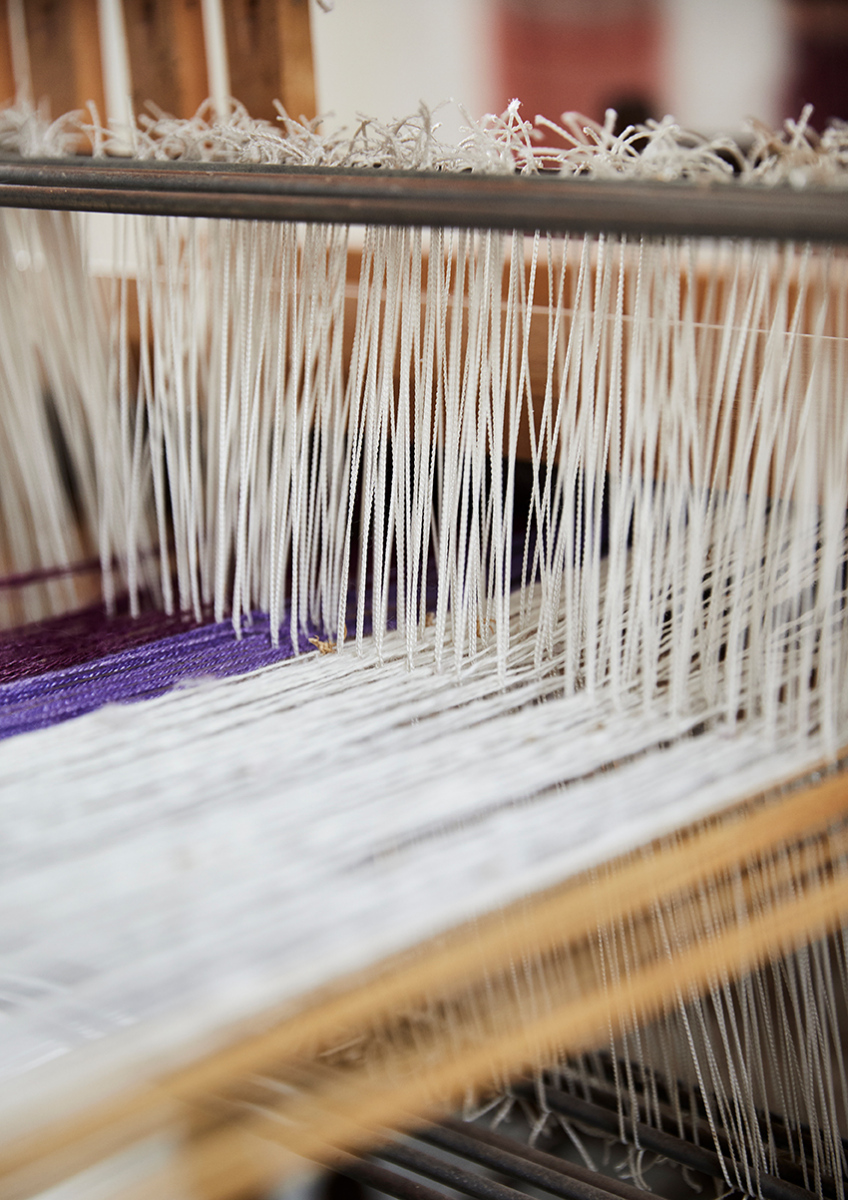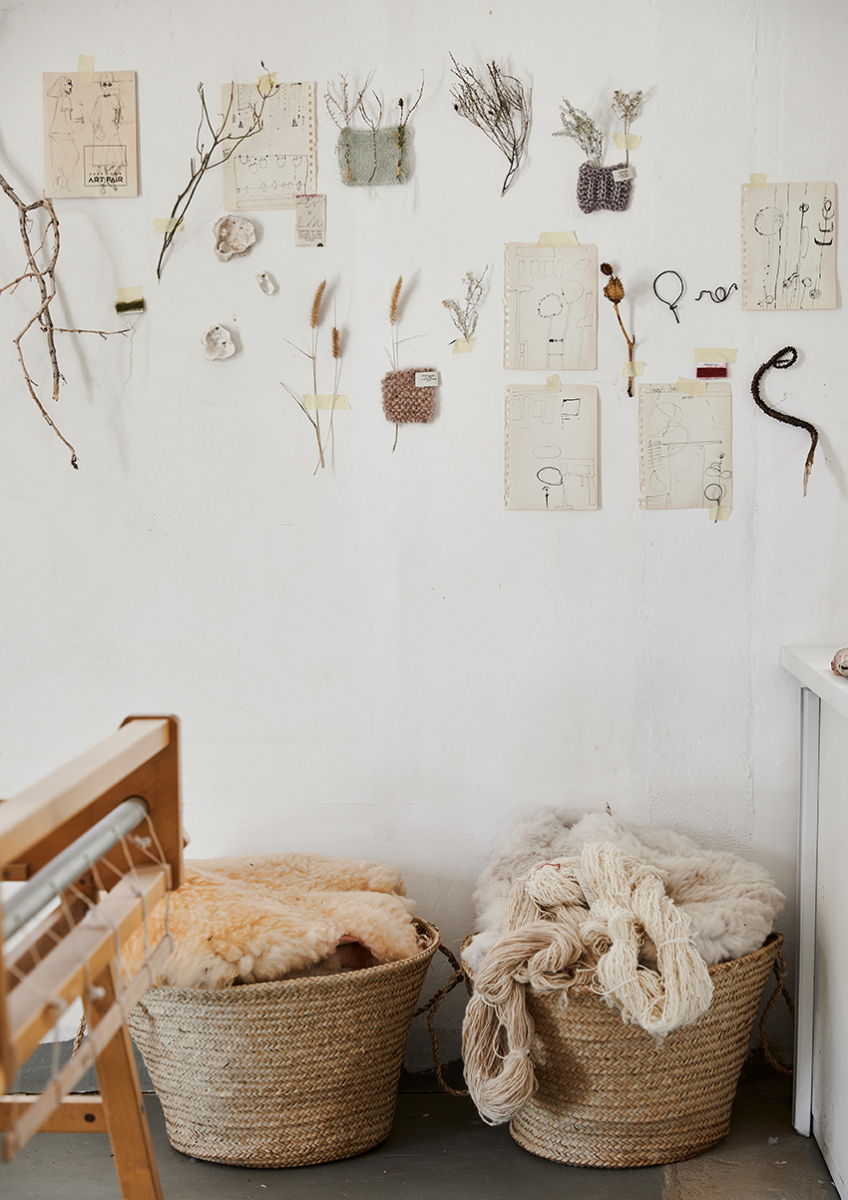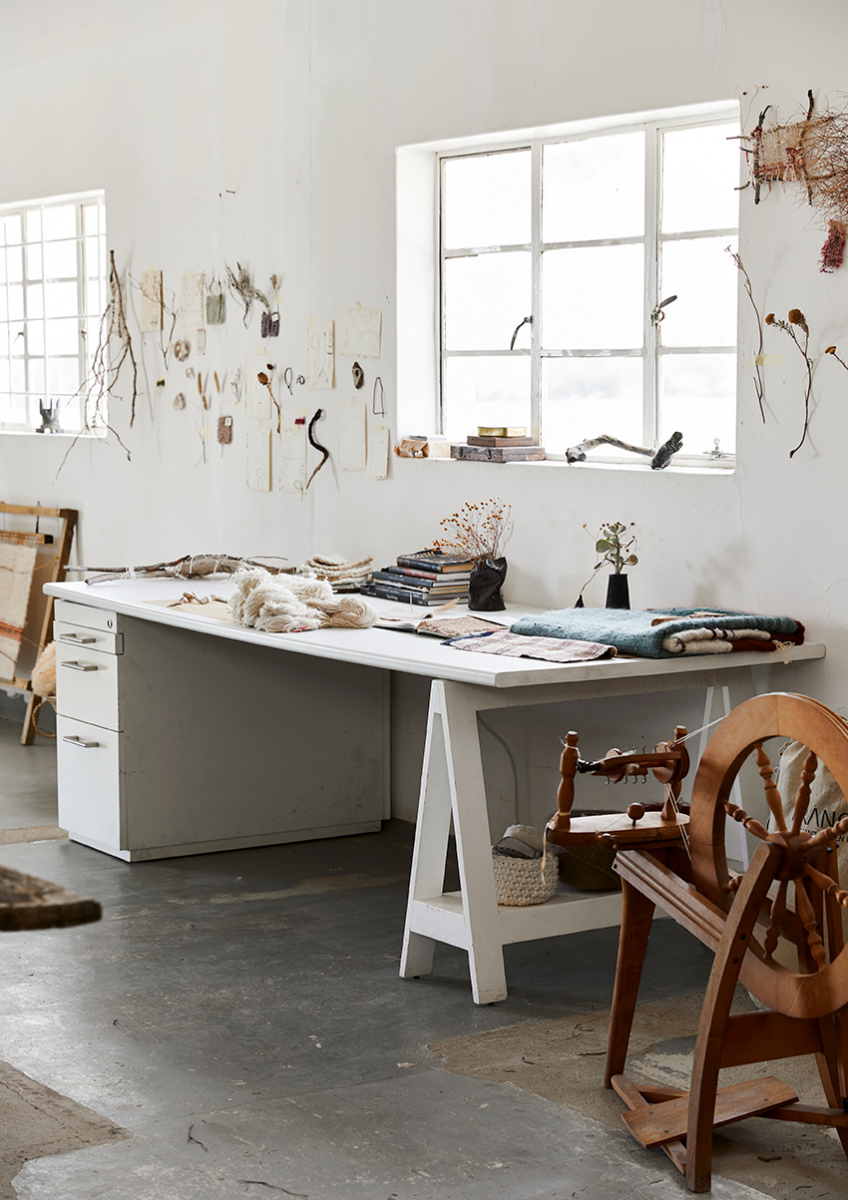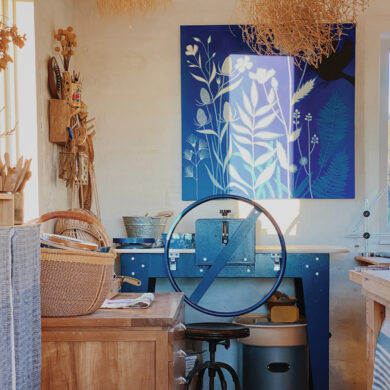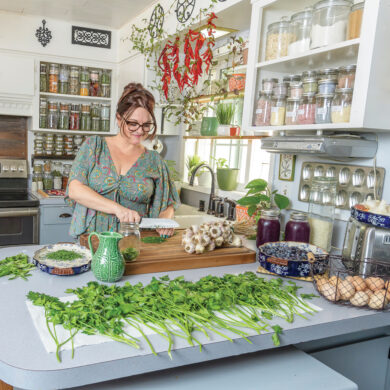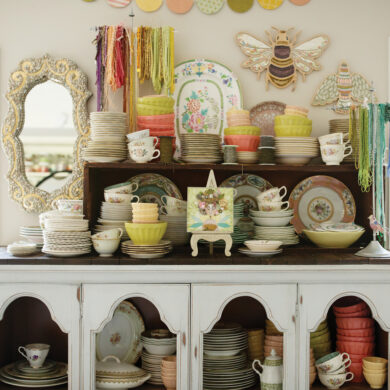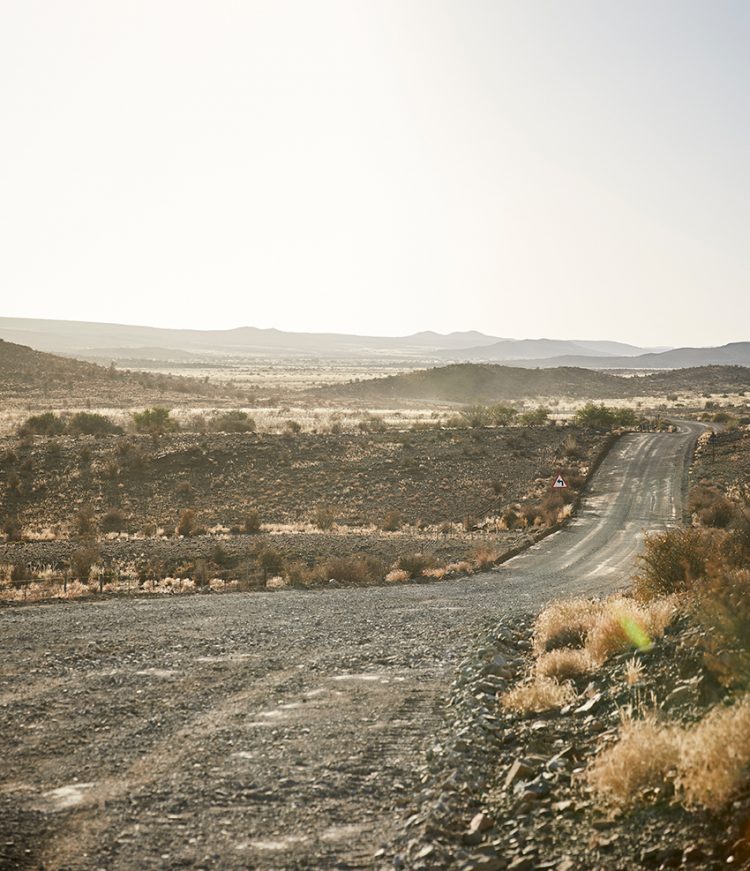
This is a place where extreme harshness — scorching heat on summer days, icy cold on winter nights — coexists with the delicate beauty of indigenous plant life, and where the bone-dry air is scented with dust yet still exquisitely clean and crisp. Sunrise and sunset are soft and subtle moments, the land stretches seemingly endlessly to the distant horizons, and the sky feels somehow higher above one’s head than it does elsewhere. The people of the Karoo are special, too friendly to every visitor, yet with an inner reserve that reflects the elusive nature of the place in which they live and work.
The arid, semi-desert landscapes of South Africa’s central Karoo region are an acquired taste
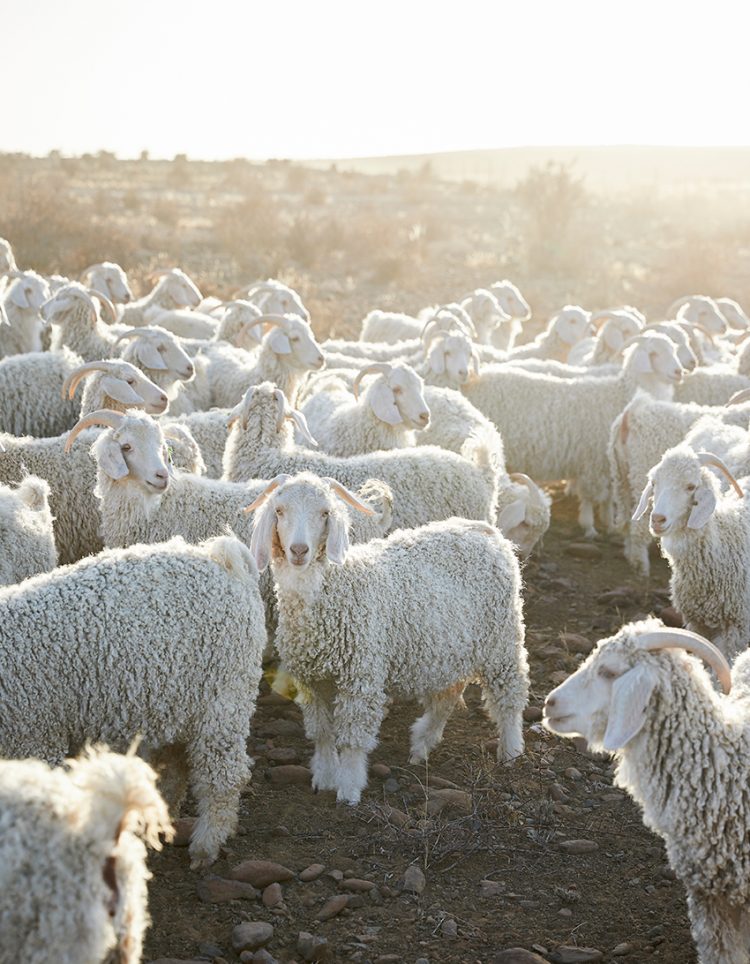 This is also an area renowned for its exquisite mohair. The mohair fibres produced by the angora goats of the Karoo are some of the very best there is in the world, prized around the globe (and, most especially, in the textile centres of Italy and Japan). In South Africa itself, the exceptional quality of local mohair is not as well known. Partly as a result of this, almost all of it is exported as a raw material, to be spun, dyed, and woven elsewhere. Which is why as a designer, rug maker, and Karoo native, spending some time working in the international fashion industry, I came to realize how incredibly special and unique mohair is.
This is also an area renowned for its exquisite mohair. The mohair fibres produced by the angora goats of the Karoo are some of the very best there is in the world, prized around the globe (and, most especially, in the textile centres of Italy and Japan). In South Africa itself, the exceptional quality of local mohair is not as well known. Partly as a result of this, almost all of it is exported as a raw material, to be spun, dyed, and woven elsewhere. Which is why as a designer, rug maker, and Karoo native, spending some time working in the international fashion industry, I came to realize how incredibly special and unique mohair is.
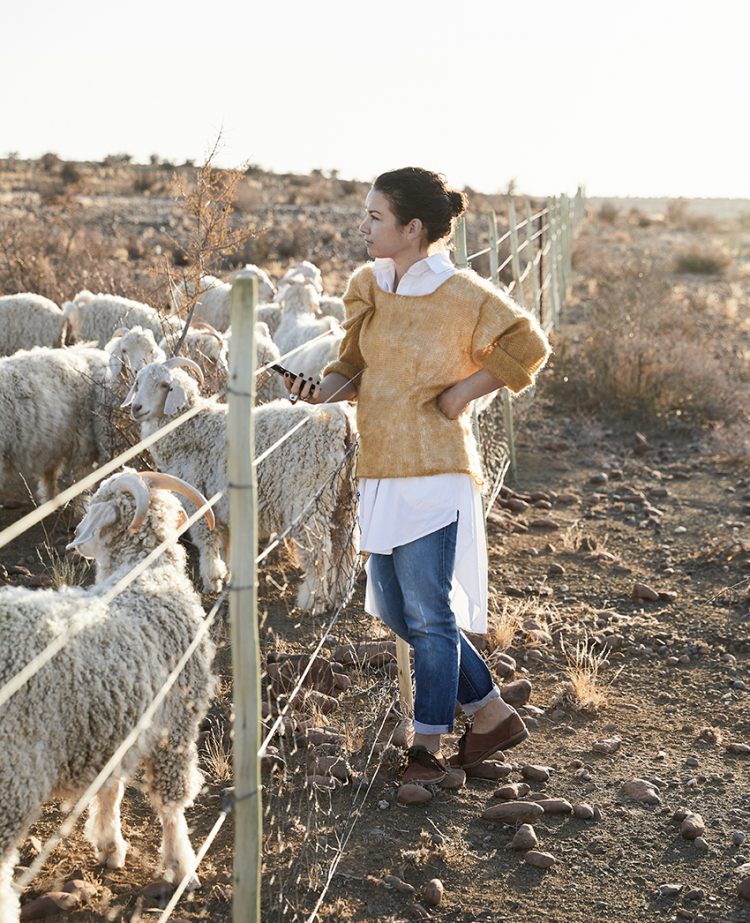
I have always known about mohair: I grew up on the Van Hasselt family farm, which is located outside the small town of Prince Albert and includes one of the oldest angora goat studs in South Africa. The mohair produced by those goats is an integral part of my heritage. It’s no wonder I became determined to produce a local product … that highlights mohair’s unique and desirable qualities. The result of that resolution is Frances V.H Mohair Rugs.
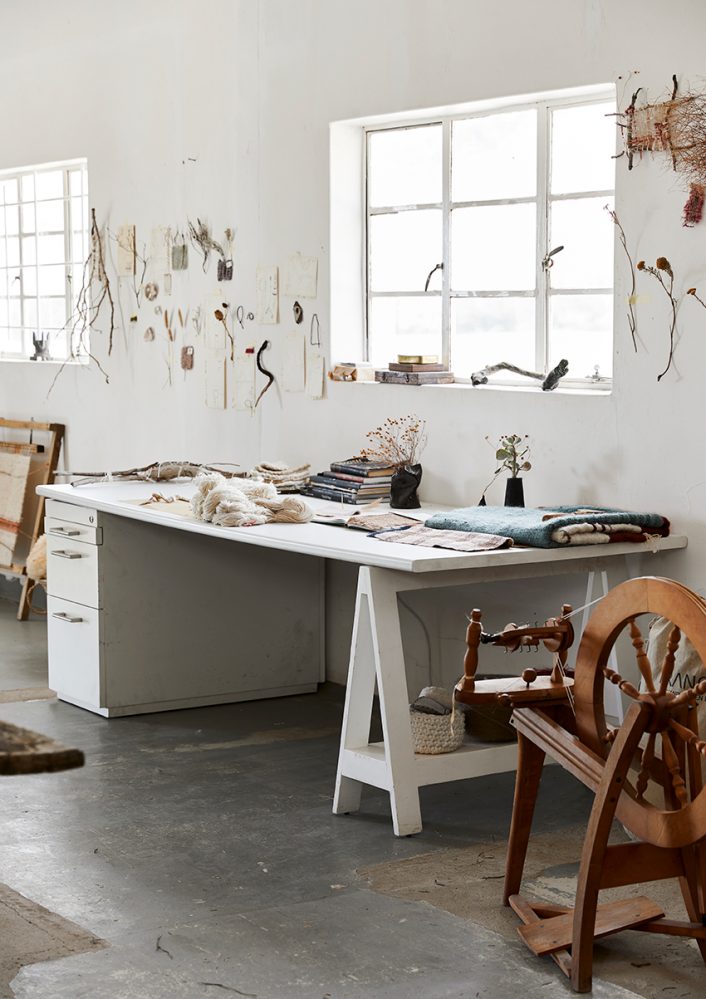
My studio workroom is located on the farm. It’s a simple and practical space, furnished with heirloom chairs with one of the walls decorated with weaving samples, color tests, and other works in progress. The studio makes use of a variety of looms to hand-weave rugs and develop an ever-broadening understanding of mohair textiles. At my large working desk, I might spend time on any given day designing a new rug or writing about my passion for Karoo mohair. The vintage wooden spinning wheel is still used for spinning yarn in the studio.
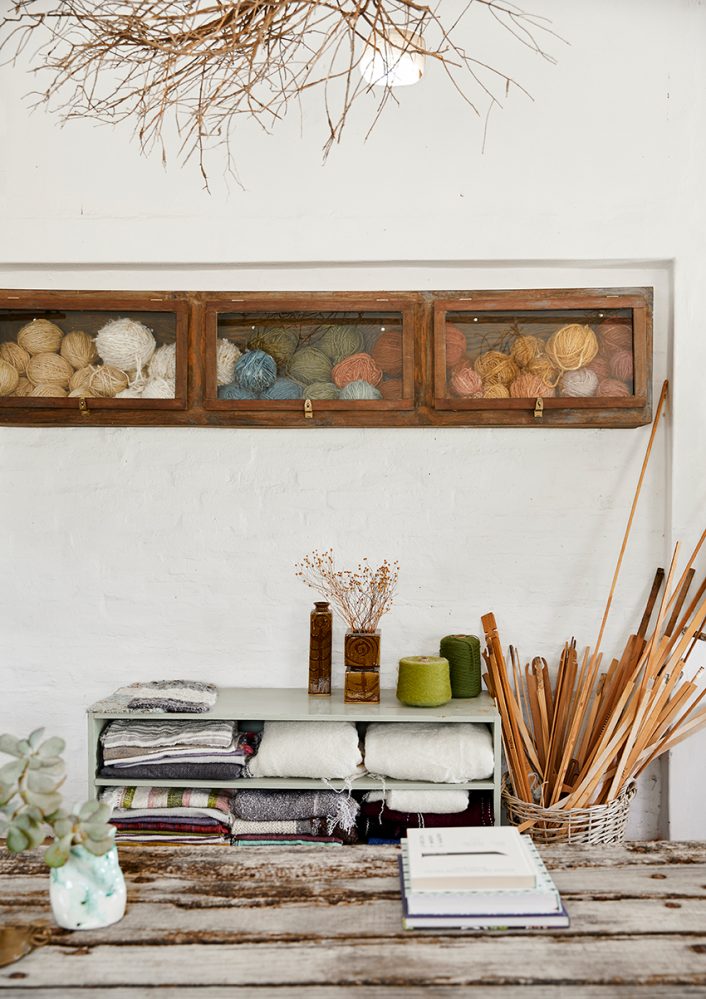
The “mood wall” in my studio is covered with a selection of my current inspirations from the Karoo landscape, ranging from seed heads to twigs and plant stems adorned with tiny grey-green foliage. Natural, undyed, hand-spun skeins of mohair in various yarn thicknesses are stored in the baskets on the floor. My studio is also a space for collaborations, residencies, and a place where clients and creatives from various backgrounds can spend time in the Karoo and get a sense of the landscape, the environment, and the animals.
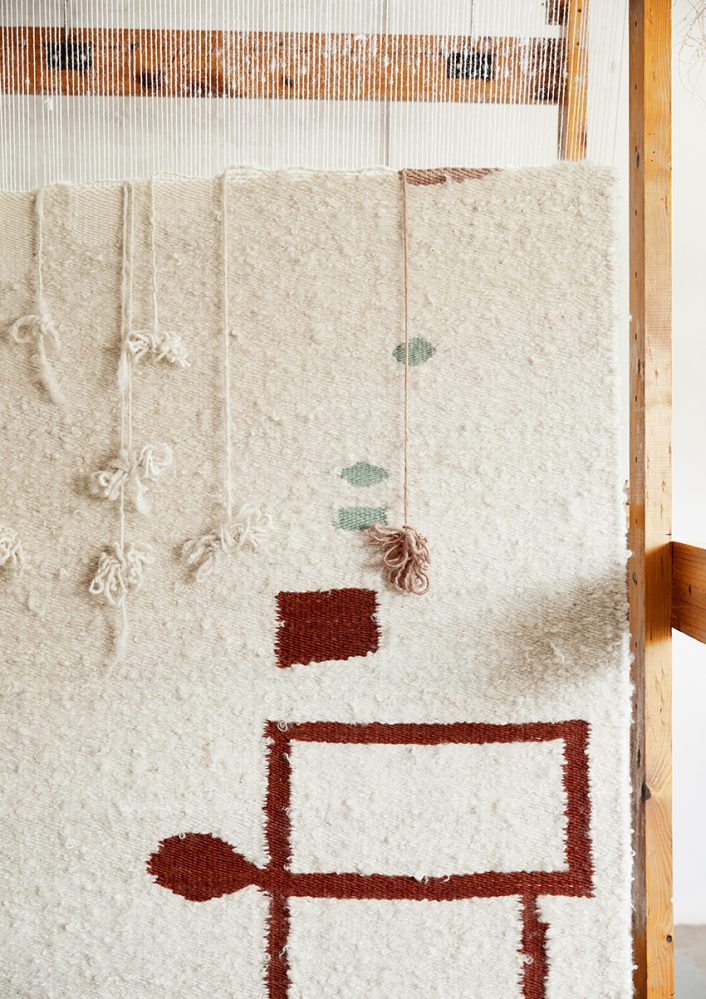
Making one of my rugs is a uniquely creative process for me. When I am in the Karoo, I make sure that I spend time outside walking, as this is where most of my ideas and inspiration comes from. The light and the colors, the patterns formed by the region’s gravel roads and folded mountain ranges — all of these unique signifiers of place are reflected in my graphic designs. These might be inspired by the tiniest folds of a veld flower or the balancing act performed by rock formations– for me, nature’s most valuable lesson is that “of simplicity.”
Furthermore, in my view, a sustainable, circular economy does not start in factories. For this designer-maker, weaving and finishing a rug are the last few steps on an intricate supply chain that starts with rain, the delicate ecosystem of the veld (landscape), the role of herdsmen, and the importance of healthy animals to produce quality mohair. I am also very aware that the resulting raw fibre also has to undergo multiple processes — washing, cleaning, dyeing, and spinning, most of which is done by hand before the yarn ends up on my loom.
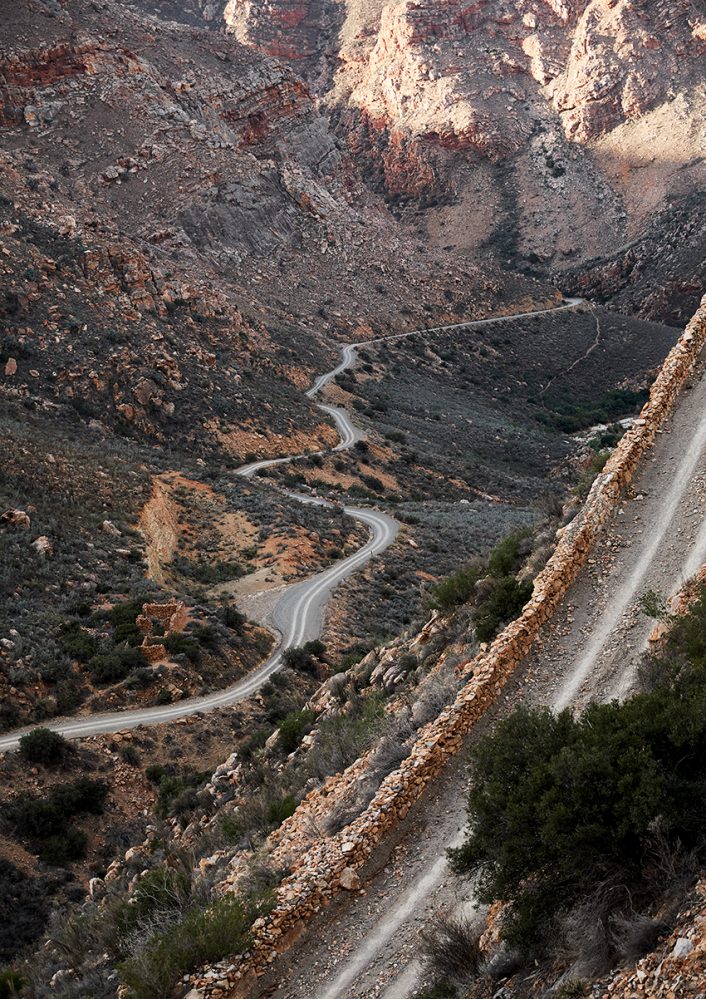
Each individual rug I produce is the sort of very contemporary luxury item that I describe as rare, once-off, sustainable, trend-free, timeless, unique to the individual’s taste, and handmade. As I often take care to explain, myrugs also reflect more than one single person’s creativity: I am a collaborator, both with my clients and with local traditional textile workers. Another personal aim is to offer sustainable employment and training in a part of the world where jobs are scarce.
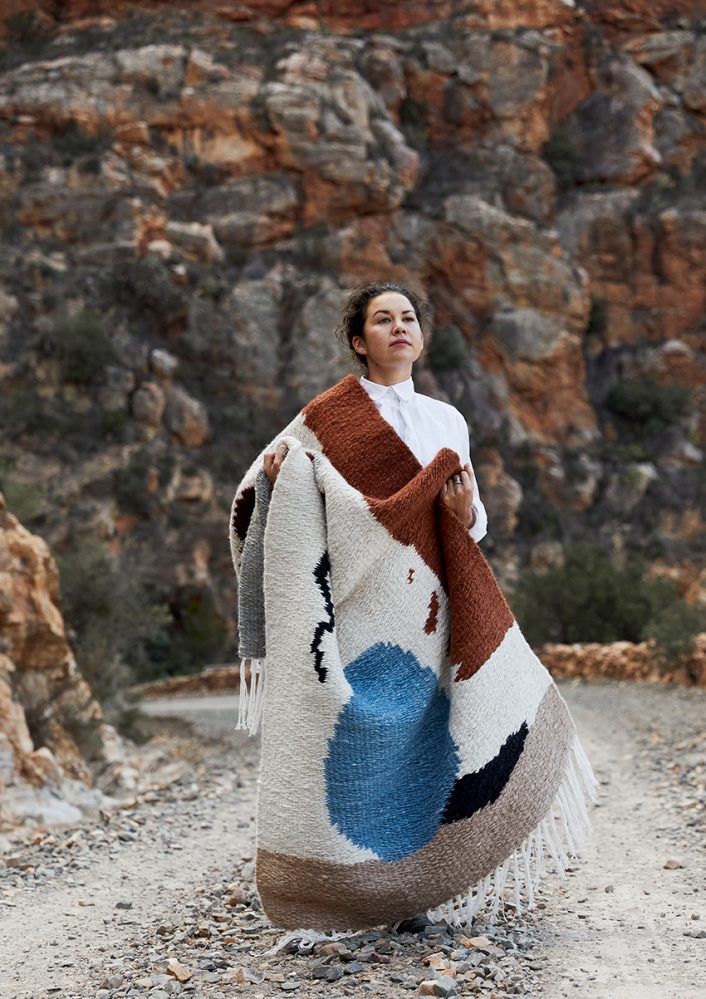
One result of this multifaceted approach to what I create is that no two days of my working life are the same. I spend time finding my inspiration in Karoo landscape around me, of which one of my favorites is the world-renowned Swartberg Pass, which curves through the mountains not far from the farm. The inspiration from the landscape helps with formulating my designs, with the next step being to collaborate with clients. All of my work is made to order, so I have a very close relationship with clients.
But I am also occupied with promoting the Frances V.H brand, sharing its story with the world, and of course there is always something happening in the studio, from dyeing yarns to spinning, weaving up new orders, or playing around with different finishes. And as this is a working farm, there’s plenty of everyday administration, logistics, packaging of orders, and fixing of equipment, an inevitable part of running a business such as mine.
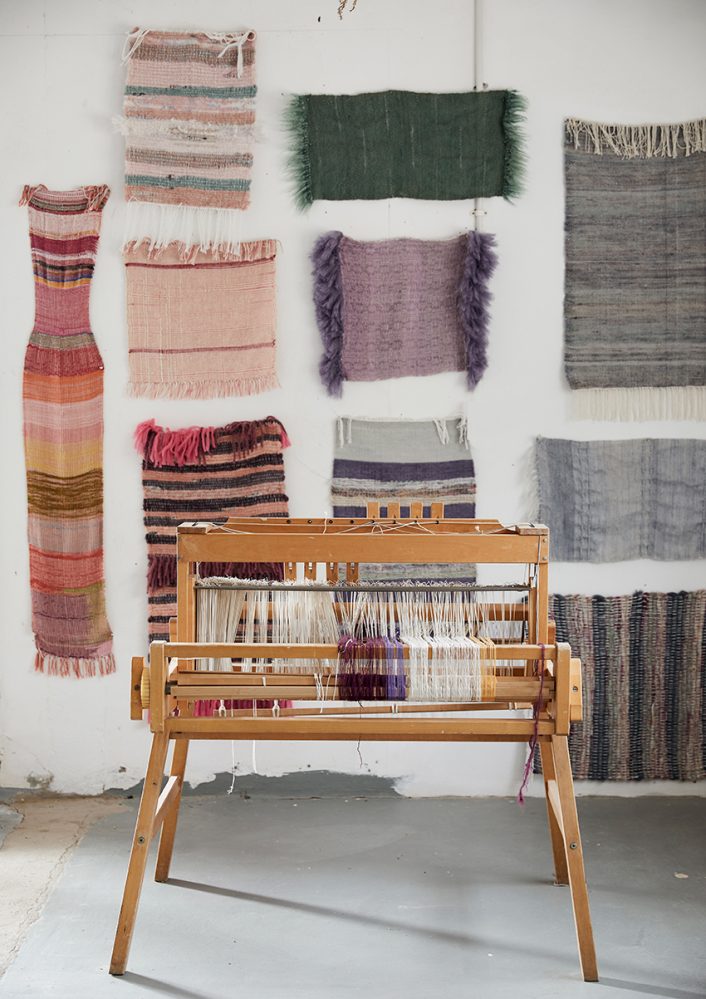
Reflecting both the uniqueness of the Karoo’s ever-changing landscapes, and my personal passion for mohair as a fibre, my rugs demonstrate my view that South African mohair should be recognized in the same way cashmere is in Scotland or alpaca in Peru — and to achieve this we need to create exceptional locally made, finished products. This is why Frances V.H creations are luxurious in the most contemporary sense: not as a result of being costly, but because my captivating rugs encapsulate what I describe as a “world view” that is all about clean air, open spaces, an appreciation for nature, meals around a table with friends and family, and building a functional home in which you feel safe and calm.
“Nature is the defining element–it informs every aspect of what we try to create”

This is a place where extreme harshness — scorching heat on summer days, icy cold on winter nights — coexists with the delicate beauty of indigenous plant life, and where the bone-dry air is scented with dust yet still exquisitely clean and crisp. Sunrise and sunset are soft and subtle moments, the land stretches seemingly endlessly to the distant horizons, and the sky feels somehow higher above one’s head than it does elsewhere. The people of the Karoo are special, too friendly to every visitor, yet with an inner reserve that reflects the elusive nature of the place in which they live and work.
The arid, semi-desert landscapes of South Africa’s central Karoo region are an acquired taste
 This is also an area renowned for its exquisite mohair. The mohair fibres produced by the angora goats of the Karoo are some of the very best there is in the world, prized around the globe (and, most especially, in the textile centres of Italy and Japan). In South Africa itself, the exceptional quality of local mohair is not as well known. Partly as a result of this, almost all of it is exported as a raw material, to be spun, dyed, and woven elsewhere. Which is why as a designer, rug maker, and Karoo native, spending some time working in the international fashion industry, I came to realize how incredibly special and unique mohair is.
This is also an area renowned for its exquisite mohair. The mohair fibres produced by the angora goats of the Karoo are some of the very best there is in the world, prized around the globe (and, most especially, in the textile centres of Italy and Japan). In South Africa itself, the exceptional quality of local mohair is not as well known. Partly as a result of this, almost all of it is exported as a raw material, to be spun, dyed, and woven elsewhere. Which is why as a designer, rug maker, and Karoo native, spending some time working in the international fashion industry, I came to realize how incredibly special and unique mohair is.

I have always known about mohair: I grew up on the Van Hasselt family farm, which is located outside the small town of Prince Albert and includes one of the oldest angora goat studs in South Africa. The mohair produced by those goats is an integral part of my heritage. It’s no wonder I became determined to produce a local product … that highlights mohair’s unique and desirable qualities. The result of that resolution is Frances V.H Mohair Rugs.

My studio workroom is located on the farm. It’s a simple and practical space, furnished with heirloom chairs with one of the walls decorated with weaving samples, color tests, and other works in progress. The studio makes use of a variety of looms to hand-weave rugs and develop an ever-broadening understanding of mohair textiles. At my large working desk, I might spend time on any given day designing a new rug or writing about my passion for Karoo mohair. The vintage wooden spinning wheel is still used for spinning yarn in the studio.

The “mood wall” in my studio is covered with a selection of my current inspirations from the Karoo landscape, ranging from seed heads to twigs and plant stems adorned with tiny grey-green foliage. Natural, undyed, hand-spun skeins of mohair in various yarn thicknesses are stored in the baskets on the floor. My studio is also a space for collaborations, residencies, and a place where clients and creatives from various backgrounds can spend time in the Karoo and get a sense of the landscape, the environment, and the animals.

Making one of my rugs is a uniquely creative process for me. When I am in the Karoo, I make sure that I spend time outside walking, as this is where most of my ideas and inspiration comes from. The light and the colors, the patterns formed by the region’s gravel roads and folded mountain ranges — all of these unique signifiers of place are reflected in my graphic designs. These might be inspired by the tiniest folds of a veld flower or the balancing act performed by rock formations– for me, nature’s most valuable lesson is that “of simplicity.”
Furthermore, in my view, a sustainable, circular economy does not start in factories. For this designer-maker, weaving and finishing a rug are the last few steps on an intricate supply chain that starts with rain, the delicate ecosystem of the veld (landscape), the role of herdsmen, and the importance of healthy animals to produce quality mohair. I am also very aware that the resulting raw fibre also has to undergo multiple processes — washing, cleaning, dyeing, and spinning, most of which is done by hand before the yarn ends up on my loom.

Each individual rug I produce is the sort of very contemporary luxury item that I describe as rare, once-off, sustainable, trend-free, timeless, unique to the individual’s taste, and handmade. As I often take care to explain, myrugs also reflect more than one single person’s creativity: I am a collaborator, both with my clients and with local traditional textile workers. Another personal aim is to offer sustainable employment and training in a part of the world where jobs are scarce.

One result of this multifaceted approach to what I create is that no two days of my working life are the same. I spend time finding my inspiration in Karoo landscape around me, of which one of my favorites is the world-renowned Swartberg Pass, which curves through the mountains not far from the farm. The inspiration from the landscape helps with formulating my designs, with the next step being to collaborate with clients. All of my work is made to order, so I have a very close relationship with clients.
But I am also occupied with promoting the Frances V.H brand, sharing its story with the world, and of course there is always something happening in the studio, from dyeing yarns to spinning, weaving up new orders, or playing around with different finishes. And as this is a working farm, there’s plenty of everyday administration, logistics, packaging of orders, and fixing of equipment, an inevitable part of running a business such as mine.

Reflecting both the uniqueness of the Karoo’s ever-changing landscapes, and my personal passion for mohair as a fibre, my rugs demonstrate my view that South African mohair should be recognized in the same way cashmere is in Scotland or alpaca in Peru — and to achieve this we need to create exceptional locally made, finished products. This is why Frances V.H creations are luxurious in the most contemporary sense: not as a result of being costly, but because my captivating rugs encapsulate what I describe as a “world view” that is all about clean air, open spaces, an appreciation for nature, meals around a table with friends and family, and building a functional home in which you feel safe and calm.
“Nature is the defining element–it informs every aspect of what we try to create”

 This is also an area renowned for its exquisite mohair. The mohair fibres produced by the angora goats of the Karoo are some of the very best there is in the world, prized around the globe (and, most especially, in the textile centres of Italy and Japan). In South Africa itself, the exceptional quality of local mohair is not as well known. Partly as a result of this, almost all of it is exported as a raw material, to be spun, dyed, and woven elsewhere. Which is why as a designer, rug maker, and Karoo native, spending some time working in the international fashion industry, I came to realize how incredibly special and unique mohair is.
This is also an area renowned for its exquisite mohair. The mohair fibres produced by the angora goats of the Karoo are some of the very best there is in the world, prized around the globe (and, most especially, in the textile centres of Italy and Japan). In South Africa itself, the exceptional quality of local mohair is not as well known. Partly as a result of this, almost all of it is exported as a raw material, to be spun, dyed, and woven elsewhere. Which is why as a designer, rug maker, and Karoo native, spending some time working in the international fashion industry, I came to realize how incredibly special and unique mohair is.







